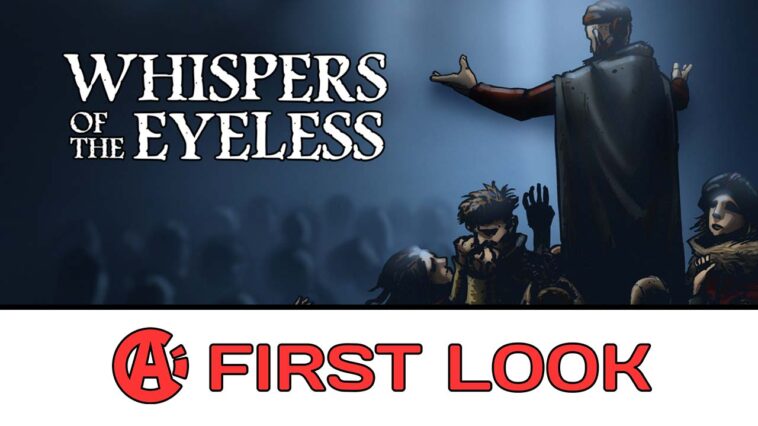Whispers of the Eyeless is a kickstarter backed game created by Evil Gingerbread studios – a team of people who created the Grimhammer mod for Warhammer. I feel this is worth mentioning because the art style of the game is taken from the splash screens of said mod. If you’ve played it, this should give you a good idea about how the game will look and feel.
Though maybe not for everyone’s taste, I do think the art style is very thematic brining a real sense of a decrepit world where death lies around every corner. At times it can feel like playing an old school RPG and other moments, an interactive table top adventure.
Whispers of the Eyeless is about the first prophet of the dead gods, aka you, as you build a cult following, build out your base, go on tales to gather resources and equipment, and make difficult choices.
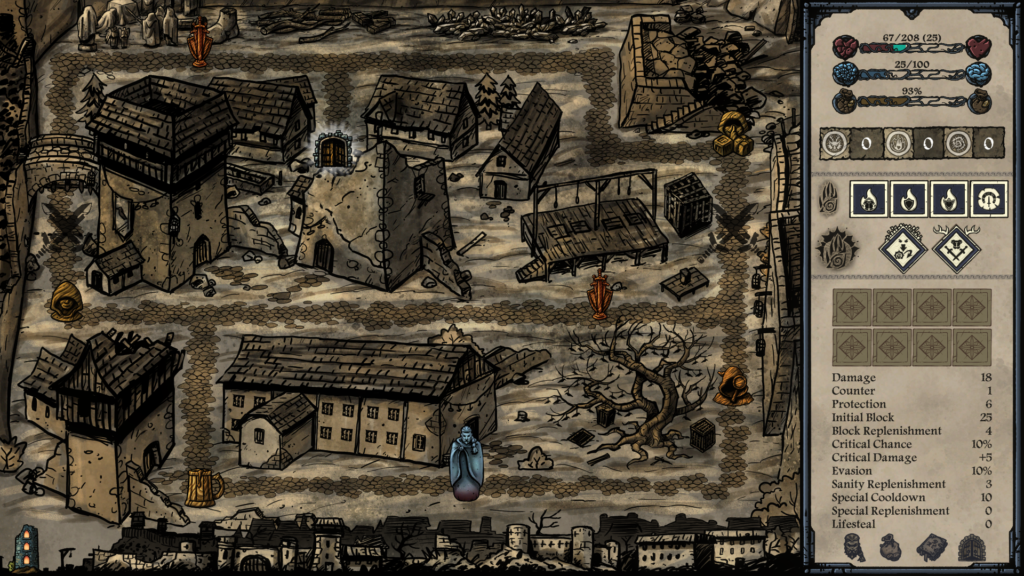
These impressions are based on the demo available to us before it’s public release on steam. Consisting of roughly the first 2-3 hours of the game, there were many systems not yet in place and only an initial taste of the story and gameplay on offer.
Right from the beginning of the game you are facing a group of starved and ragged people, and we are presented with a choice:
“Embrace the feral urges”
“Stoke their desires”
“Share madness’s comfort”
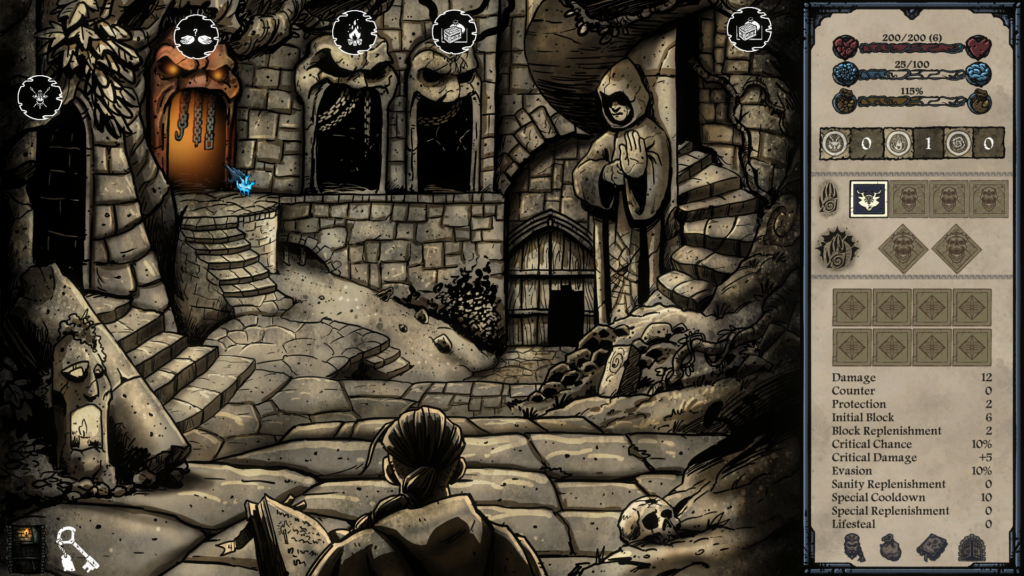
This choice ultimately means what class you will be playing – each presenting you with a group of skills and abilities that will become available to you in the game as you level up. However, this is not initially apparent to you as the game offers no explanation as to what this choice means or what will happen depending on what you chose.
And here lies perhaps one of the game’s greatest strengths!
As I played through the demo, I was presented more and more choices, each giving me little clue as to what they meant and even what the prophet (you) would do if I were to choose them. And some can lead to shocking outcomes.
At first, I thought this a misstep but as the story moved on, I began to realise that this may have been intentional by the devs. Not knowing really makes you wonder what would have happened if I made that other choice. It adds to the wonder of the world and even what might be going through the head of the prophet of whom you control. Am I controlling him or are the gods giving me an illusion of control?
If this is keeps up through the entire release, I can imagine this a game where many will want to go back just to see what would have happened if another choice was made.
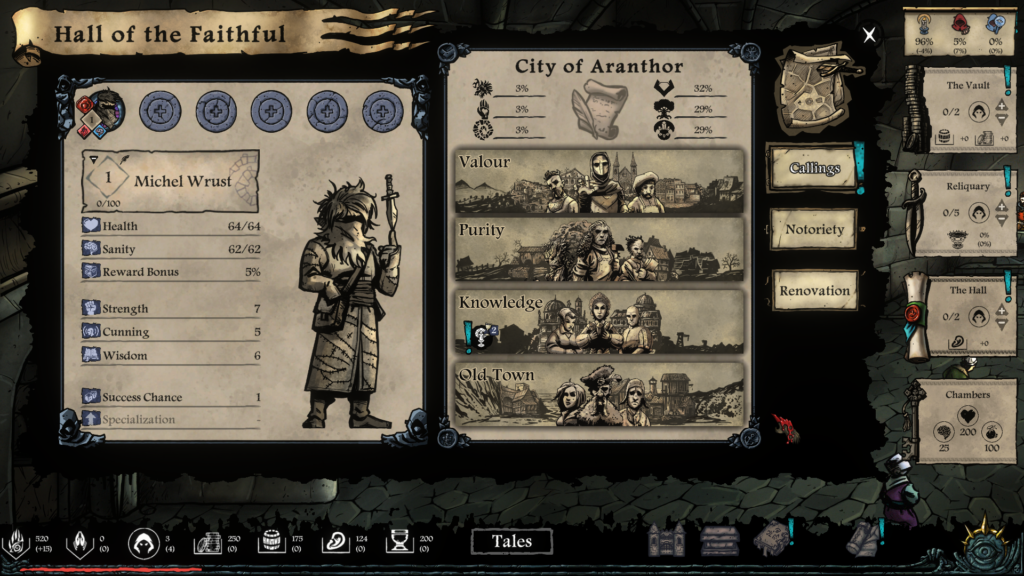
The story enhances this, not wasting its time explaining things to you and not giving information dumps of things you are likely to forget. It keeps its world a mystery as it does the intentions of the prophet and the gods.
It’s too soon to say where the story will really go but I believe the games success will depend in large on the events and how they play out.
The gameplay is split in two halves – one a base building mini game where you use the resources you gather on tales to renovate the cult hideout and the other a rpg adventure reminiscent of the darkest dungeon.
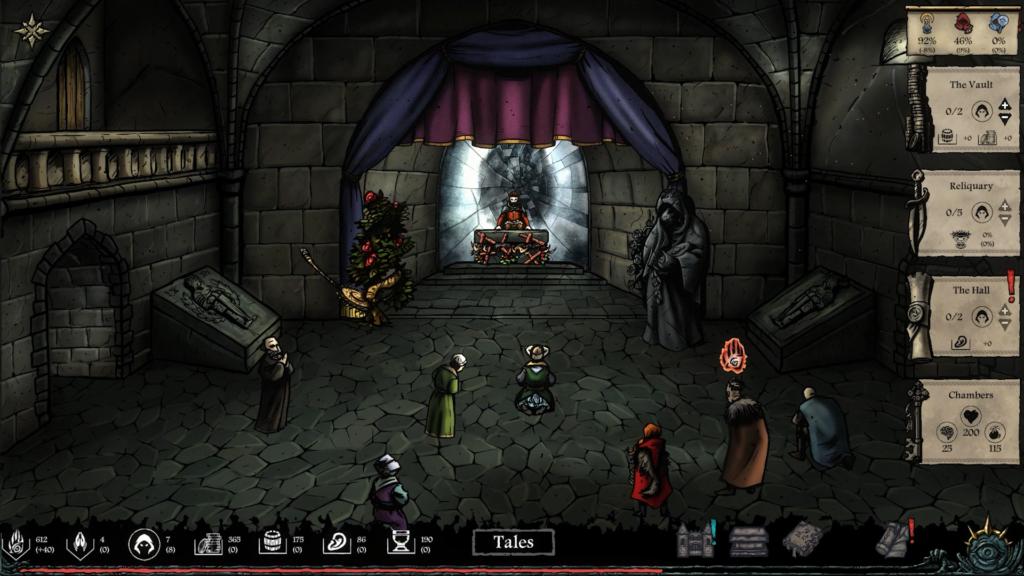
The cult hideout needs work.
This is the part of the game that I feel has had the least attention. The UI feels unfinished and unintuitive on where things are located and there is a lack of tutorial for much of what needs to be done to progress the hideout – the game dumping much of this on you in one go. From the get go I was unsure what my choices were doing. And this, unlike the narrative, is something that should not be a mystery.
But despite this, all the building blocks seem there. The hideout has multiple levels of progression, you can send follows on quests and even need to manage the cultists you have already recruited. So long as the game communicates better the pros and cons of each choice and resource, and emphasises the consequences of ignoring your cultist’s problems then I believe this will become a good building block upon release.
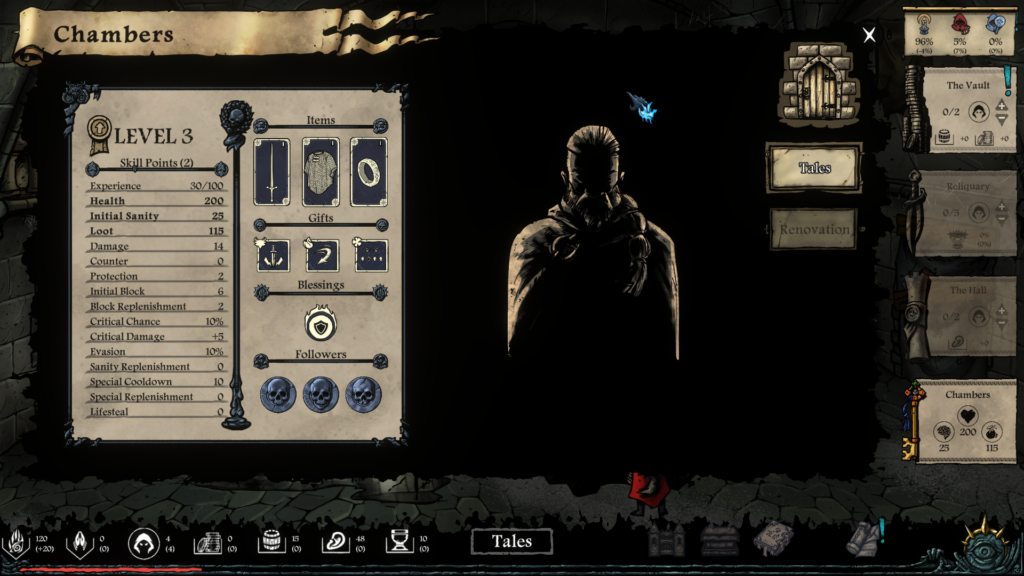
The final part of the game is the Tales – a part of the game where you must embark into a dungeon or town to obtain loot.
What’s really cool about this mode is that every area is presented in a different way. The town is a top-down view map where you must guide the prophet to different locations but due to blocks in the road must go to certain locations before others to reach the exit. The dungeon gives you doors to choose from – each leading to treasure or relics or gold but shown from a first-person view.
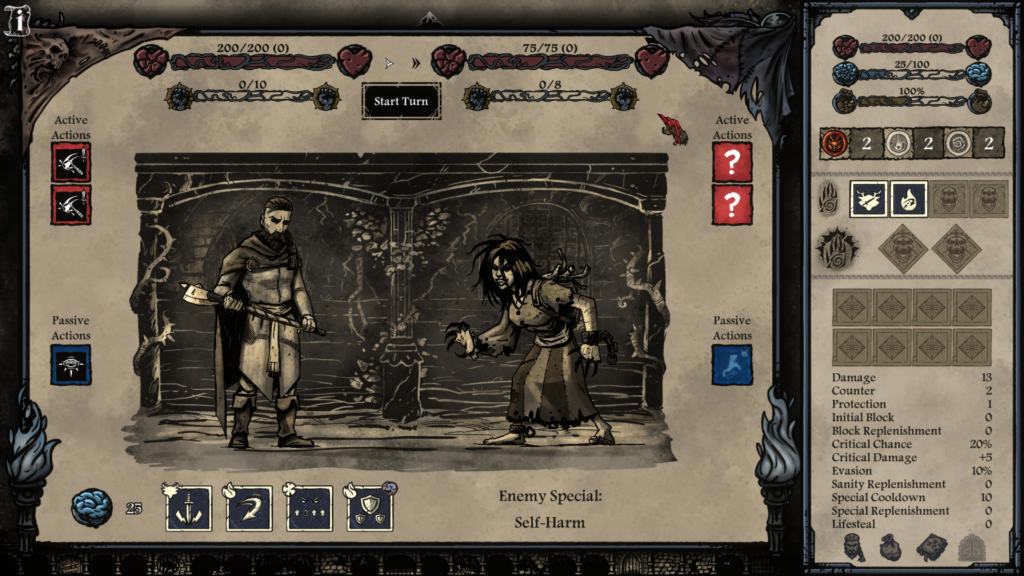
Upon completing a floor, you can progress to the next for harder enemies and better loot or retreat to the hideout to claim what you have gathered thus far.
This mode has all the trappings for a good rpg rouge-like system where each tale will see you get different relics and fight in different ways but also come back stronger for the next tale. For the start of the game, I do feel like the progression was a bit slow though this could be because of the demo. I did not obtain a single piece of armour across almost 10 tales making me all but unable to take on harder levels of the dungeons.
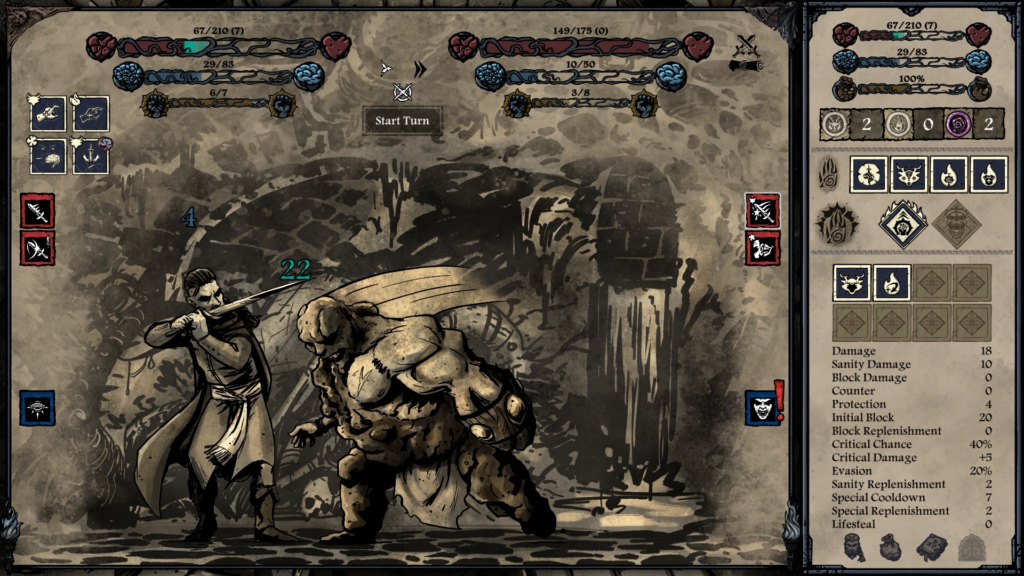
As such I can’t say I had a brilliant time in this as the balance felt off. All the enemies were just a bit too strong and I never seemed to get much stronger across all the time I spent questing – not finding a single piece of new equipment. Currently the mode needs work but should equipment be added and this change the way you play with each Tale I can see this being an addictive gameplay loop once the game fully releases.
Overall Whispers of the Eyeless feels rough in what is likely a very early vertical slice of the game. But unlike many other games I have played, the bones feel good. And once built upon Whispers of the Eyeless could become an addictive game to jump into.


